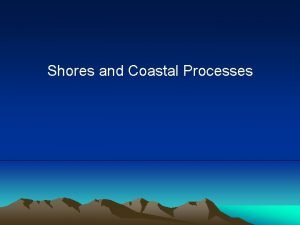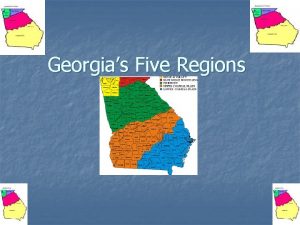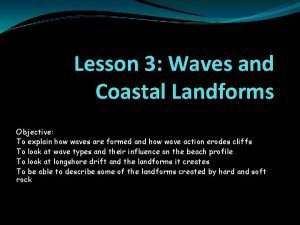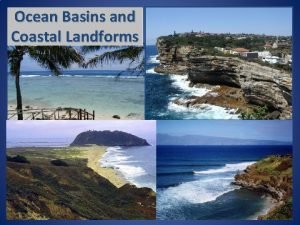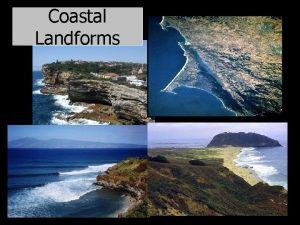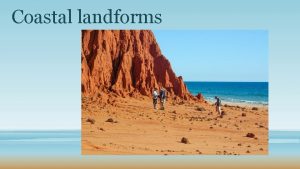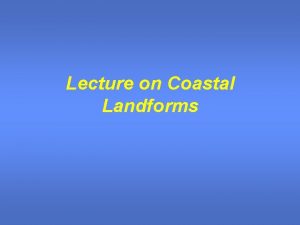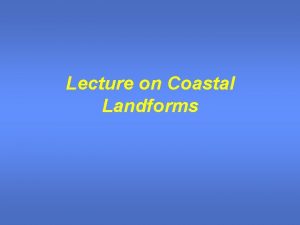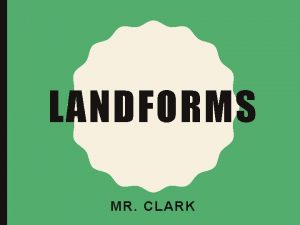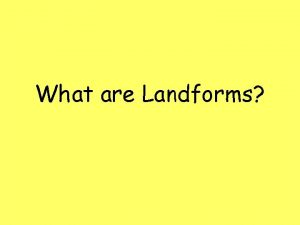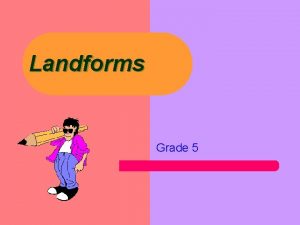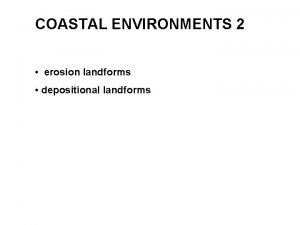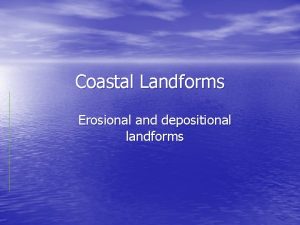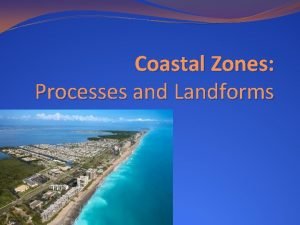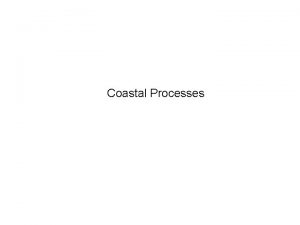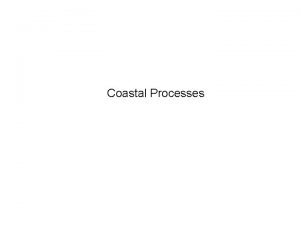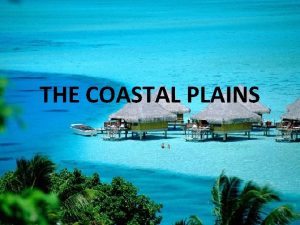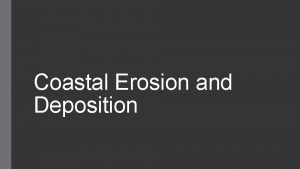Coastal landforms revision Waves When waves approach the

















- Slides: 17

Coastal landforms - revision

Waves When waves approach the shore, frictional resistance with the sea bed slows them down at their base. They get taller and their wavelength decreases. The top of the wave overtakes the bottom as the water gets shallower and they break. The energy of waves determines whether they build up or degrade a beach. The former are called constructive waves and the latter destructive waves. What determines whether waves are constructive or destructive? Height Wavelength Frequency Swash/backwash.

Deposition Sediment is deposited where waves and currents slow down or the supply of sediment exceeds the rate of removal. Pebbles are deposited when wave energy is high. Stormy seas are able to carry them and often throw them far up a beach. Smaller particles, like sand, are only deposited when wave energy is low.

How are spits formed?



Complete the picture dragging and dropping the words on the right.

What is a tombolo? If a spit joins the mainland to an island it is called a tombolo. At Chesil Beach in Dorset, the mainland is joined to the Isle of Portland.

Chesil Beach Study the photograph. Y X Portland Name features X and Y.

What is a bar? If a spit joins one part of the mainland to another it is called a bar. For example, there is a bar at Orford Ness in Devon.

Complete the picture dragging and dropping the words on the right.

Erosional landforms

Wave-cut platforms are flat areas found at the base of cliffs. What are the stages involved in their formation? Erosion at the base of the cliff creates a wave-cut notch. The cliff material above the notch is undermined. The material becomes unstable and eventually collapses. This repeats and the cliff retreats, leaving a rock platform.

Caves, arches, stacks and stumps Some erosional landforms are created where wave action attacks weak points, such as joints in rocks and bedding planes between bands of rock. The most common types of landforms created in this way are caves, arches, stacks and stumps. Durdle Door, Dorset Old Man of Hoy, Orkney Do you know what landforms the pictures show?

Cliffs Steep cliffs are often found at the coast in areas where the rocks are more resistant. Erosional processes, such as abrasion and quarrying, attack the base of the cliff. What temporary features are formed by erosion? Wave-cut notches and blow -holes are both temporary features of erosion caused by the sea eroding natural weaknesses in the rock structure – joints, bedding planes and cracks.

How much do you know about coasts?

Key Ideas Waves are the result of the wind blowing over the sea. They break as they approach land. Swash and backwash describe the movement of a wave on the beach. Fetch is the distance that the wind has travelled. Sub-aerial processes such as weathering and mass movement occur on the cliff face. Coastal processes of erosion include hydraulic action, attrition, corrosion and solution. Landforms created by erosion include headlands and bays, caves, arches, stacks and stumps. Longshore drift is a method of coastal transport. Landforms created by deposition include beaches, spits, tombolos and bars.
 Erosional coastal landforms
Erosional coastal landforms Blue ridge region
Blue ridge region Coastal landforms
Coastal landforms Coastal landforms diagram
Coastal landforms diagram Emergent vs submergent coastline
Emergent vs submergent coastline Passive progressive
Passive progressive Carbon dioxide temperature
Carbon dioxide temperature Seismic waves are mechanical waves
Seismic waves are mechanical waves Mechanical waves and electromagnetic waves similarities
Mechanical waves and electromagnetic waves similarities Difference between matter waves and electromagnetic waves
Difference between matter waves and electromagnetic waves High and low frequency waves
High and low frequency waves Compare and contrast p waves and s waves using venn diagram
Compare and contrast p waves and s waves using venn diagram The wave chapter 13
The wave chapter 13 Mechanical waves and electromagnetic waves similarities
Mechanical waves and electromagnetic waves similarities Mechanical vs electromagnetic
Mechanical vs electromagnetic Light waves are electromagnetic waves true or false
Light waves are electromagnetic waves true or false Mechanical waves and electromagnetic waves venn diagram
Mechanical waves and electromagnetic waves venn diagram Sound is a longitudinal wave
Sound is a longitudinal wave
